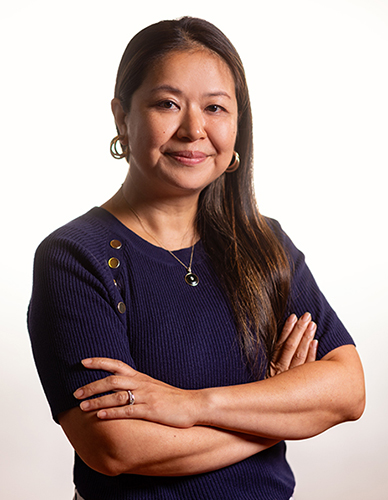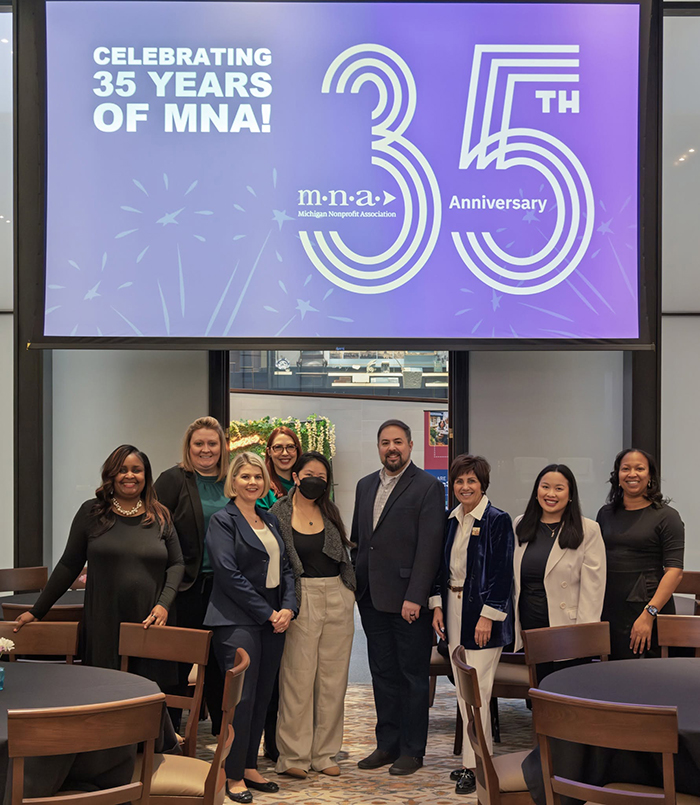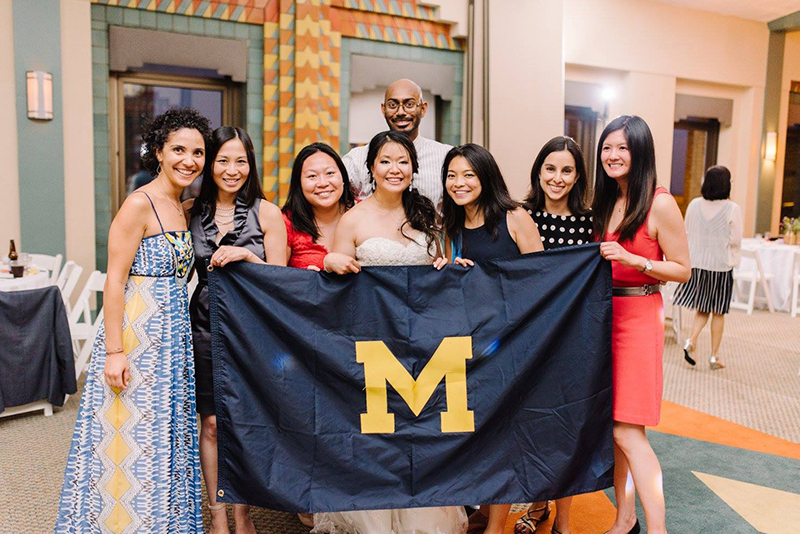SPOTLIGHT: Nellie Tsai (MBA/MA ’13)

At Michigan Nonprofit Association, Nellie Tsai (MBA/MA ’13) serves as the Social Innovation Officer, where she leads efforts to build more equitable and inclusive systems across the organization and the broader nonprofit sector. One of the projects she’s most proud of is the MI Nonprofit Relief Fund, which used a participatory grantmaking model designed in partnership with LEO and guided by 106 community leaders from across the state to distribute $50 million in ARPA funding to nearly 1,500 small nonprofits.
Nellie also helped launch Michigan’s first statewide nonprofit leadership census, offering new insight into who is shaping the sector and who may be left out. Prior to this role, she was MNA’s Community and Civic Engagement Director and helped lead the 2020 Michigan Nonprofits Count Campaign, which built a statewide infrastructure to increase census participation in historically undercounted communities. Nellie’s earlier experiences at Synopsys and in AmeriCorps made her curious about how systems work, and ultimately led her to pursue an MBA/MA at Ross. There, she found a community of classmates with diverse lived experiences who challenged her to think differently. That experience, combined with Nellie’s time at MNA, continues to shape how she thinks about social impact—not just in terms of representation, but in shifting power, deepening trust, and building accountability across our sector.
For our readers, can you describe what you’re doing with the Michigan Nonprofit Association as well as your previous positions there?
In my current role as the Social Innovation Officer, I lead Michigan Nonprofit Association’s commitment and strategy to be an equitable, and inclusive organization. Working across the organization I focus on building systems and programs that innovate and improve MNA’s core services.
One of the efforts I’m most proud of is spearheading the MI Nonprofit Relief Fund. One notable feature of the fund is its participatory grant-making model, developed in partnership with the Michigan Department of Labor and Economic Opportunity (LEO), to address the specific needs of lean, resource-limited small nonprofits. The application process was informed by an advisory board made up of 18 community stakeholders from diverse organizations across Michigan. These advisory members served a 10-week term to ensure the fund’s accessibility and effectiveness in supporting small nonprofits.
Additionally, we worked with 88 community leaders, known as regional hub members, who provided technical assistance, outreach, and contributed to refining the process, ensuring the fund’s impact was maximized across diverse nonprofit sectors. These leaders represented organizations of all sizes and regions across the state, giving voice to the depth and breadth of the nonprofit sector. The regional hub members conducted peer reviews of each grant application, with each submission evaluated by three hub members. Their reviews helped determine the funding amounts awarded to applicants.
Through this grant-making model shaped by community leaders from across the state, we distributed $35 million in ARPA funding to 1,479 nonprofits.
Another major initiative I helped guide was the development of a statewide leadership census. It was the first time a study like this had been conducted of to understand the racial identities of nonprofit in the state, and gave us insight into who is shaping the sector and who is being left out.
 Earlier at MNA, I served as the Community and Civic Engagement Director and was the Deputy Campaign Manager for the 2020 Michigan Nonprofits Count Campaign. We focused on getting out the count in communities that had been systemically and historically undercounted. We helped establish thirteen regional hubs across the state that funded and supported nonprofits – many of them first-time grantees! – to lead local outreach. Census tracts where we had active outreach efforts resulted in higher average self-response rate than campaign in-active tracts.
Earlier at MNA, I served as the Community and Civic Engagement Director and was the Deputy Campaign Manager for the 2020 Michigan Nonprofits Count Campaign. We focused on getting out the count in communities that had been systemically and historically undercounted. We helped establish thirteen regional hubs across the state that funded and supported nonprofits – many of them first-time grantees! – to lead local outreach. Census tracts where we had active outreach efforts resulted in higher average self-response rate than campaign in-active tracts.
Across all of these roles at MNA, I’ve learned that meaningful change is slow, steady work; and, that leadership means making space, asking better questions, and being open to learning as you go.
Describe your journey from Synopsys, to Ross, and on to the MNA. How have your skills advanced, and what connections were you able to find between positions?
When I think back on my time at Synopsys, what I remember the most is trying to communicate the value of corporate social responsibility as a non-engineer to teams who had very different priorities. It gave me a better understanding of how people outside the nonprofit space think about giving and volunteering. That, paired with my earlier experience as an AmeriCorps member, made me want to step back and look at the throughlines across all these roles.
I decided to pursue an MBA/MA at Ross because I wanted the space to connect what I had experienced in the field with a broader understanding of how systems work. One of the things I appreciated most at Ross was the diversity of experiences and backgrounds of my classmates. Being in community with people who approached problems from such different perspectives helped me grow and see work in new ways.
In our recent Board Fellows Forum, you discussed the importance of diversifying nonprofit income sources, and in a major article you discussed the underrepresentation of BIPOC and women in nonprofits. Is there anything you’d like to add or reiterate on those subjects?
I think what I’d reiterate is that representation isn’t just about optics; it’s about power, trust, and accountability. Through our Leadership Census work, we can see the gaps in who holds decision-making power across race and gender lines. So, when I think of diversifying nonprofit leadership or funding models, I’m thinking about the sector’s sustainability and integrity. We cannot keep expecting the same people to lead or fund the work and still call it community driven. Nonprofits that are willing to engage diverse voices, reflect on their practices, and make real shifts can build stronger, more connected organizations. These last few years have demonstrated time and time again that we are all connected; our collective liberation is tied to each other.
 It’s nice that you worked with B+I on the Board Fellows Forum and that during your time at Ross, you participated in our Social Impact Challenge . Do you continue to stay in touch with students and professors at U-M? Is there a part of your educational experience in particular that influenced your trajectory into social impact?
It’s nice that you worked with B+I on the Board Fellows Forum and that during your time at Ross, you participated in our Social Impact Challenge . Do you continue to stay in touch with students and professors at U-M? Is there a part of your educational experience in particular that influenced your trajectory into social impact?
Absolutely. I actually reached out to several Ross alums in the Metro Detroit area during my interview process at MNA to better understand the social impact landscape here. There’s also a number of alumni working in social impact across the region, and I try to stay in touch when our paths cross at conferences or community events.

